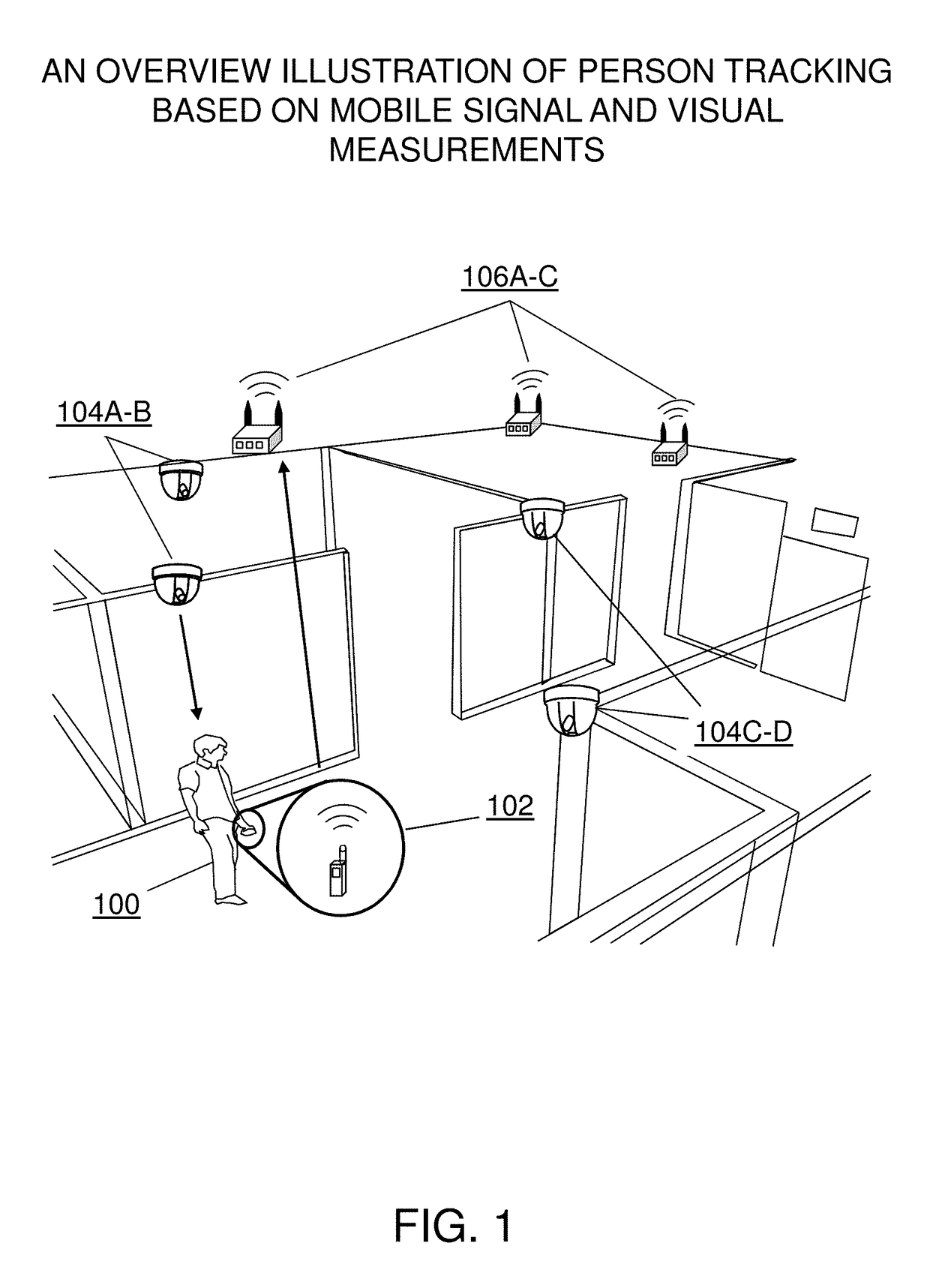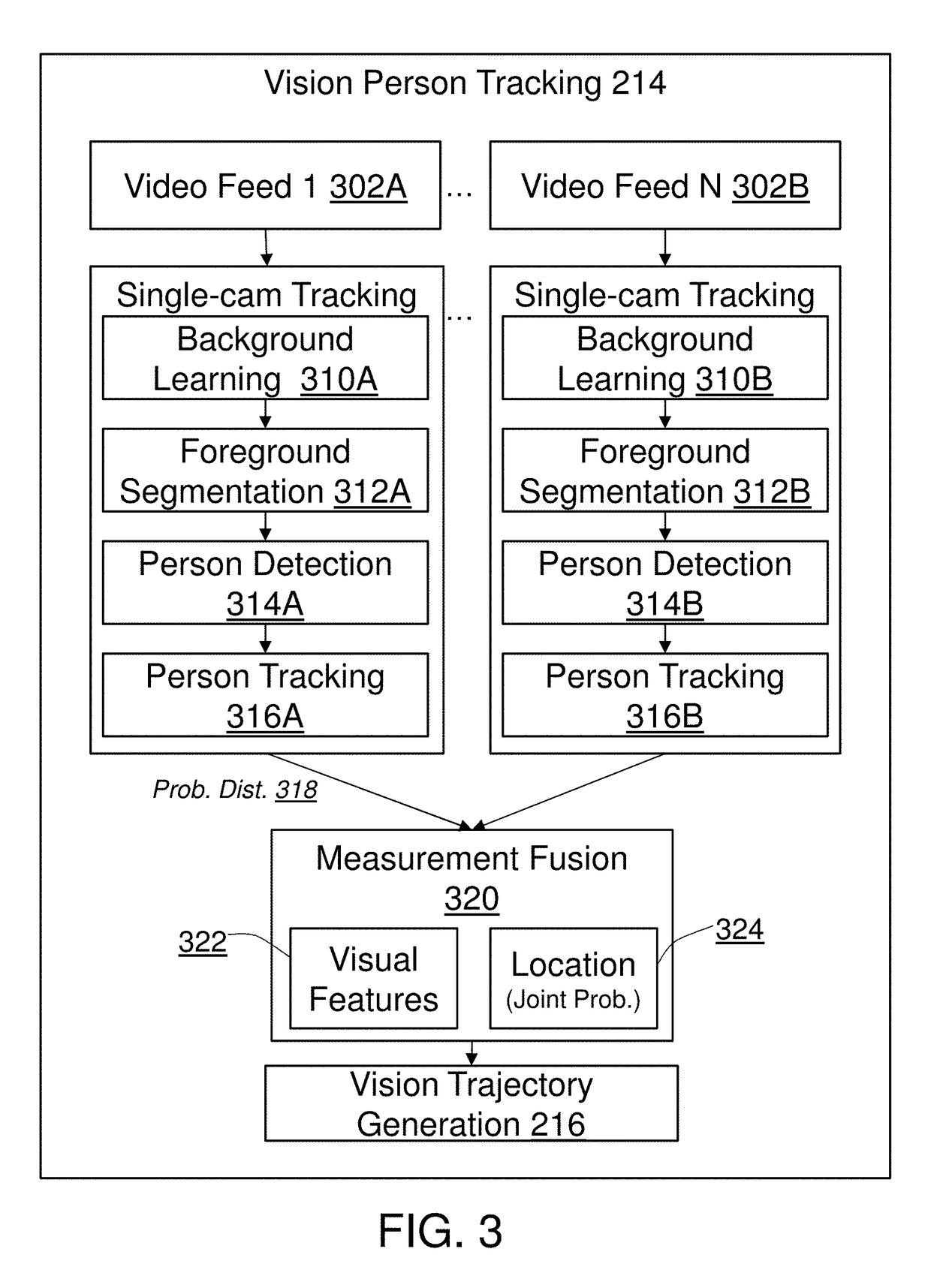Method and system for in-store shopper behavior analysis with multi-modal sensor fusion
a multi-modal sensor and in-store shopper technology, applied in the field of in-store shopper behavior analysis with multi-modal sensor fusion, can solve the problems of inability to disclose the method of using localization methods, deterioration of the quality of analysis of shopper behavior throughout, and inability to optimize the tradeoff between tracking accuracy and cost efficiency, so as to improve the reliability of store-wide, maintain cost efficiency, and improve the effect of reliability
- Summary
- Abstract
- Description
- Claims
- Application Information
AI Technical Summary
Benefits of technology
Problems solved by technology
Method used
Image
Examples
Embodiment Construction
Person Localization and Tracking
[0078]FIG. 2 shows an exemplary overview of the tracking system 200 in the present invention. Tracking occurs in the two modalities, vision-based tracking 210 and mobile signal-based tracking 220. The tracking results from both modalities are integrated and fused into a single trajectory for a shopper in the multi-modal trajectory fusion 230 module. Although the algorithms and methods are described with respect with to Wi-Fi signal-based tracking, it should be understood that the mobile signal-based tracking 220 can apply and extend to other mobile signals.
[0079]FIG. 1 shows a preferred embodiment for deployment of sensors vision-based tracking 210 and mobile signal-based tracking 220. In this exemplary embodiment, a person 100 carrying a mobile device 102 is tracked using vision 104 A-D and Wi-Fi 106 A-D sensors.
Vision Tracking
[0080]For vision-based tracking 210, a set of cameras are deployed in an area of interest where the sensing ranges of the cam...
PUM
 Login to View More
Login to View More Abstract
Description
Claims
Application Information
 Login to View More
Login to View More - R&D
- Intellectual Property
- Life Sciences
- Materials
- Tech Scout
- Unparalleled Data Quality
- Higher Quality Content
- 60% Fewer Hallucinations
Browse by: Latest US Patents, China's latest patents, Technical Efficacy Thesaurus, Application Domain, Technology Topic, Popular Technical Reports.
© 2025 PatSnap. All rights reserved.Legal|Privacy policy|Modern Slavery Act Transparency Statement|Sitemap|About US| Contact US: help@patsnap.com



